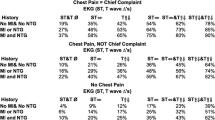Abstract
This paper presents a mechanism which infers a user's plans from his/her utterances by directing the inference process towards the more likely interpretations of a speaker's statements among many possible interpretations. Our mechanism uses Bayesian theory of probability to assess the likelihood of an interpretation, and it complements this assessment by taking into consideration two aspects of an interpretation: its coherence and its information content. The coherence of an interpretation is determined by the relationships between the different statements in the discourse. The information content of an interpretation is a measure of how well defined the interpretation is in terms of the actions to be performed on the basis of this interpretation. This measure is used to guide the inference process towards interpretations with higher information content. The information content of an interpretation depends on the specificity and the certainty of the inferences in it, where the certainty of an inference depends on the knowledge on which the inference is based. Our mechanism has been developed for use in task-oriented consultation systems. The particular domain that we have chosen for exploration is that of travel booking.
Similar content being viewed by others
References
Allen, J. F. and C. R. Perrault: 1980, ‘Analyzing Intention in Utterances’. Artificial Intelligence 15, 143–178.
Allen, J. F.: 1984, ‘Towards a General Theory of Action and Time’. Artificial Intelligence 23(2), 123–154.
Benoit, J. W., E. J. Dombroski, P. W. Jordan, and S. J. Laskowski: 1988, ‘Expert Systems for Multi-Agent Plan Recognition in Uncertain Environments’. AAAI-88 Workshop on Plan Recognition, St. Paul, Minnesota.
Bobrow, D. G., R. M. Kaplan, M. Kay, D. A. Norman, H. Thompson, and T. Winograd: 1977, ‘GUS-1, a Frame-Driven Dialog System’. Artificial Intelligence 8(2), 155–173.
Carberry, S.: 1983, ‘Tracking User Goals in an Information-seeking Environment’. Third National Conference on Artificial Intelligence, Washington D.C., pp. 59–63.
Carberry, S.: 1990, ‘Incorporating Default Inferences into Plan Recognition’. Eighth National Conference on Artificial Intelligence, Boston, pp. 471–478.
Cohen, R., F. Song, B. Spencer, and P. van Beek: 1991, ‘Exploiting Temporal and Novel Information from the User in Plan Recognition’. User Modeling and User-Adapted Interaction 1, 125–148.
de Kleer, J.: 1986, ‘An Assumption-based TMS’. Artificial Intelligence 28, 163–224.
Doyle, J.: 1979, ‘A Truth Maintenance System’. Artificial Intelligence 12, 231–272.
Fikes, R. E. and N. J. Nilsson: 1971, ‘STRIPS: A New Approach to the Application of Theorem Proving to Problem Solving’. Artificial Intelligence 2, 189–208.
Fikes, R. E., P. E. Hart, and N. J. Nilsson: 1972, ‘Learning and Executing Generalized Robot Plans’. Artificial Intelligence 3, 251–288.
Gettys, C. F., C. Kelly III, and C. R. Peterson: 1982, ‘The Best-guess Hypothesis in Multistage Inference’. In: D. Kahneman, P. Slovic, and A. Tversky (eds.): Judgment under Uncertainty: Heuristics and Biases. Cambridge University Press, pp. 370–377.
Goldman R. and E. Charniak: 1988, ‘A Probabilistic ATMS for Plan Recognition’. AAAI-88 Workshop on Plan Recognition, St. Paul, Minnesota.
Grosz, B. J.: 1977, ‘The Representation and Use of Focus in Dialogue Understanding’. Tech. Note 151, SRI International, Menlo Park, CA.
Hecking, M.: 1987, ‘How to Use Plan Recognition to Improve the Abilities of the Intelligent Help System SINIX Consultant’. Proceedings of the Second IFIP Conference on Human-Computer Interaction, Germany.
Hecking, M. and K. Harbusch: 1987, ‘Plan Recognition through Attribute Grammars’. Memo No. 17, SFB 314: AI-Knowledge-Based Systems, Dept. of Computer Science, University of Saarbrücken, Germany.
Hecking, M.: 1988, ‘Towards a Belief-Oriented Theory of Plan Recognition’. AAAI-88 Workshop on Plan Recognition, St. Paul, Minnesota.
Jennings, A., C. D. Rowles, and A. Kowalczyk: 1989, ‘Natural Language Understanding in the Medici Project’. In: R. Janicki and W. W. Koczkodaj (eds.): Computing and Information, Elsevier Science Publishers, North-Holland.
Kautz, H. and J. Allen: 1986, ‘Generalized Plan Recognition’. Proceedings of the Fifth National Conference on Artificial Intelligence, Philadelphia, Penn.
Letovsky, S.: 1988, ‘Plan Analysis of Programs’. AAAI-88 Workshop on Plan Recognition, St. Paul, Minnesota.
Litman, D. and J. F. Allen: 1987, ‘A Plan Recognition Model for Subdialogues in Conversation’. Cognitive Science 11, 163–200.
Mayfield, J.: 1991, ‘Controlling Inference in Plan Recognition’. User Modeling and User-Adapted Interaction, (in press).
Pollack, M.: 1986, ‘A Model of Plan Inference that Distinguishes between the Beliefs of Actors and Observers’. 24th Annual Meeting of the Association of Computational Linguistics, New York, NY, pp. 207–214.
Pollack, M.: 1990, ‘Plans as Complex Mental Attitudes’. In: P. Cohen, J. Morgan, and M. Pollack (eds.): Intentions in Communication. MIT Press.
Sacerdoti, E. D.: 1977, A Structure for Plans and Behavior. American Elsevier, New York.
Schmidt, C. F., N. S. Sridharan, and J. L. Goodson: 1978, ‘The Plan Recognition Problem: An Intersection of Artificial Intelligence and Psychology’. Artificial Intelligence 10, 45–83.
Shannon, C. E.: 1948, ‘A Mathematical Theory of Communications’. Bell System Technical Journals.
Sidner, C. L. and D. J. Israel: 1981, ‘Recognizing Intended Meaning and Speakers' Plans’. Seventh International Joint Conference on Artificial Intelligence, Vancouver, Canada, pp. 203–208.
Wilensky, R.: 1983, Planning and Understanding. Addison-Wesley Publishing Company, Reading, Massachusetts.
Wilensky, R., D. N. Chin, M. Luria, J. Martin, J. Mayfield, and D. Wu: 1988, ‘The Berkeley UNIX Consultant Project’. Computational Linguistics 14(4), 35–84.
Wobcke, W.: 1988, ‘A Logical Theory of Plan Recognition’. AAAI-88 Workshop on Plan Recognition, St. Paul, Minnesota.
Wu, D.: 1991, ‘Active Acquisition of User Models: Implications for Decision-Theoretic Dialog Planning and Plan Recognition’. User Modeling and User-Adapted Interaction 1, 149–172.
Author information
Authors and Affiliations
Rights and permissions
About this article
Cite this article
Raskutti, B., Zukerman, I. Generation and selection of likely interpretations during plan recognition in task-oriented consultation systems. User Model User-Adap Inter 1, 323–353 (1991). https://doi.org/10.1007/BF00141048
Received:
Revised:
Issue Date:
DOI: https://doi.org/10.1007/BF00141048




